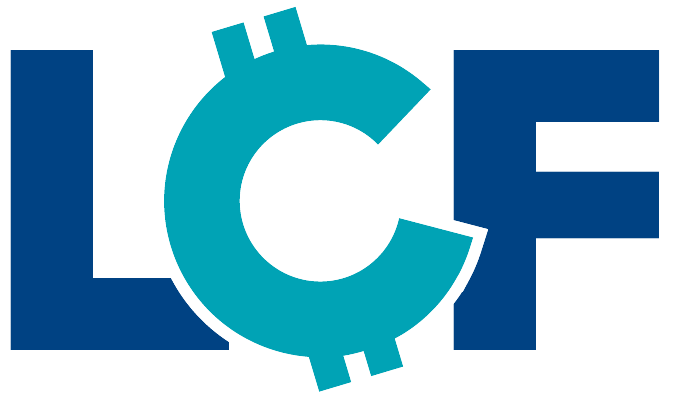Working Capital Loans and Alternative Financing
Lets Get Started
Sometimes, businesses simply need to boost cash flow. There’s no huge purchase on the horizon, no pressing large-scale business need. No, sometimes business owners just need a boost to make sure that the lights stay on and the team stays paid. When you simply need a boost to your operating cash, you’re looking for a working capital loan.
What is Working Capital?
Put simply, working capital is your company’s operating cash. Having sufficient working capital means having the ability to pay bills, make purchases, and generally weather the uncertainty of owning and operating a business.
When you’ve got enough working capital, you’re able to make payments on your debts, pay your staff, buy inventory, and still have some money left over. If you don’t have sufficient working capital, you might be looking at being unable to make payments on your obligations in the short term, and you may find it difficult to be approved for loans in the future.
How to Calculate Your Business’s Working Capital
Calculating working capital is simple. On its face, all you’ll need to do is add up the following two totals:
Current Assets: basically, add up your current cash along with any assets your company has that can be converted into cash quickly. That means your current inventory, outstanding accounts receivable, and, if you manufacture some sort of product, the raw materials used to make it.
Current Liabilities: over the course of a year, how much money do you anticipate going out the door? Add up wages, debt payments, utilities, rent, accounts payable, and taxes.
Subtract current liabilities from current assets. That’s your working capital.
What Types of Small Business Financing Can Be Used for Working Capital?
There are a number of types of working capital loans and other forms of funding that can function as working capital. Depending on your industry, your company’s credit history, and your business style, any number of financing options can help cover your operational expenses when working capital gets tight.
Alternative Financing: Merchant Cash Advance
Merchant cash advances are not subject to the same rules that small business loans are subject to. That’s because a merchant cash advance is a purchase transaction, not a loan. A merchant cash advance (or MCA) provider isn’t lending anything. They’re buying a portion of your company’s future credit and debit card sales.
A merchant cash advance should be used as a last resort for working capital because it typically carries a high cost of capital. While most MCA financing is offered as a type of “unsecured loan” it is technically not a loan. Therefore, it is strongly advised that business owners become very familiar with the terms and costs associated with an MCA before signing any agreement.
MCAs typically have a pretty short application process in which the advance provider will look over your company’s volume and quantity of credit and debit card sales, among a few other factors. If you’re making enough transactions, the MCA provider will buy a percentage of future sales. You’ll then make payments daily based on that percentage. If you have a lot of transactions one day, you’ll pay more than you will on days with fewer transactions. That’s a key benefit compared to the regular-sized monthly payments that come with traditional loans.
Because the MCA provider is more focused on sales than on credit, MCAs are readily available to new businesses and businesses with less-than-ideal credit reports. What’s important to MCA providers is that your company is processing a significant number of credit card sales, not your total debt volume. In fact, unlike most loan applications, many merchant cash advance providers won’t ask for your credit report.
Another key difference between MCAs and loans is that you don’t pay interest with an MCA. Instead, you’ll pay a factor rate. A cash advance’s factor rate is typically a number between 1 and 2. When multiplied by the size of the cash advance, you’ll find the total repayment amount. For example, if a company takes out an MCA of $6,000 at a factor rate of 1.3, it’ll repay $7,800 no matter how quickly the advance is repaid. In fact, paying a cash advance quickly actually drives up the APR.
Other benefits to MCAs include:
-
They can be used for many working capital needs. Whether that’s utility payments or rent, MCAs come with few restrictions on how they can be used. Some forms of lending don’t have such flexibility. An equipment loan, for example, must be used to finance a specific piece of equipment.
-
They move quickly. Small business owners in need of working capital financing quickly should know that MCAs are very quick and simple to apply for. On top of that, the cash hits your company’s bank account as soon as a single business day.
-
There are often no collateral requirements with MCAs. Other forms of lending might require you to offer up your company’s assets (or your personal assets) in order to be approved. MCAs very rarely have this requirement.
Business Lines of Credit
Business lines of credit function well as small business working capital loans. They effectively act as a readily-available bit of capital ready to fund whatever aspects of daily operations are necessary. If you’ve got a working capital line of credit, you’ll always have the cash flow on hand to deal with any emergencies or issues facing your company.
To understand a line of credit, first, consider a traditional loan. When you receive a term loan, you’ll receive a lump sum payment of the full amount of the loan. Your payments will begin immediately, and you’ll make those monthly payments to whichever financial institution has underwritten the loan until the loan is paid back in full.
In a business line of credit, your company instead receives a credit limit. Any amount under that limit can be spent on whichever operational costs you’d like: paying employees, upgrading equipment, or even making payments on other debts. As you spend money from the line of credit, you’ll make payments and pay interest on the money you’ve spent. And once you pay down the line of credit, you can spend that cash again up to your credit limit (lines of credit function much like business credit cards in that way).
There are a few other things to note about business lines of credit as a source of working capital:
-
They can be used in a variety of ways. However you choose to draw on your line of credit, you’ll commonly be able to use that cash to fund all sorts of business expenses. Many business owners like to use them as a security blanket: if something goes amiss with a piece of equipment or some other vital piece of the business, a line of credit means you’re able to repair or replace the necessary equipment as quickly as possible.
-
Lines of credit should be taken out when you’ve got the best possible credit. When you’ve got great credit, you’ll be able to get higher loan amounts at lower interest rates, providing even more flexibility. If your credit score is particularly excellent, it might be the ideal time to seek out a line of credit. If your credit is less than perfect, you may still want to take out a line of credit, but be aware that you may be asked for a personal guarantee and still face higher interest rates than you would otherwise.
-
You can use your line of credit for more than just emergencies. Sometimes, your company might be presented with an opportunity to make (or save) considerable money: suppliers might offer a discount, or a marketing opportunity might arise. These are also great uses of a line of credit.
Alternative Financing: Invoice Factoring
Invoice factoring is another form of transactional funding, much like a merchant cash advance. But unlike a merchant cash advance, invoice factoring providers purchase a business’s unpaid invoices and collect the money due.
If your company has a large volume of invoices due each month, invoice financing can be a good option. If, for example, you collect $50,000 each month on invoices, an invoice factoring company might offer you $46,000. You get fast access to liquidity, while the factoring company collects the full $50,000.
Invoice factoring works very, very quickly, much like a merchant cash advance. They’re also available to startups and other companies with poor credit, since the repayment is actually done through customers, not the business itself.
Recent Posts

As a small business owner, managing your business finances effectively is crucial to the success and long term viability of your business. A well-structured budget helps you allocate resources efficiently; prepares you for unexpected costs; and ensures the growth of your business. This article will provide comprehensive budgeting tips and strategies tailored for small business owners that will help you navigate the complexities of financial management.

Starting a restaurant is a dream for many entrepreneurs, but turning that dream into reality requires more than just culinary expertise. One of the biggest challenges for restaurateurs in launching a restaurant is securing the necessary funding. Whether you’re opening a new restaurant or expanding an existing one, navigating the world of restaurant financing can be complex – but we are here to help.

Obtaining financing can be a pivotal step for small business owners looking to scale their ventures. However, for those with less-than-stellar credit scores, navigating the realm of business funding can feel daunting. Thankfully, even with bad credit, options exist to fuel your business aspirations. In this


